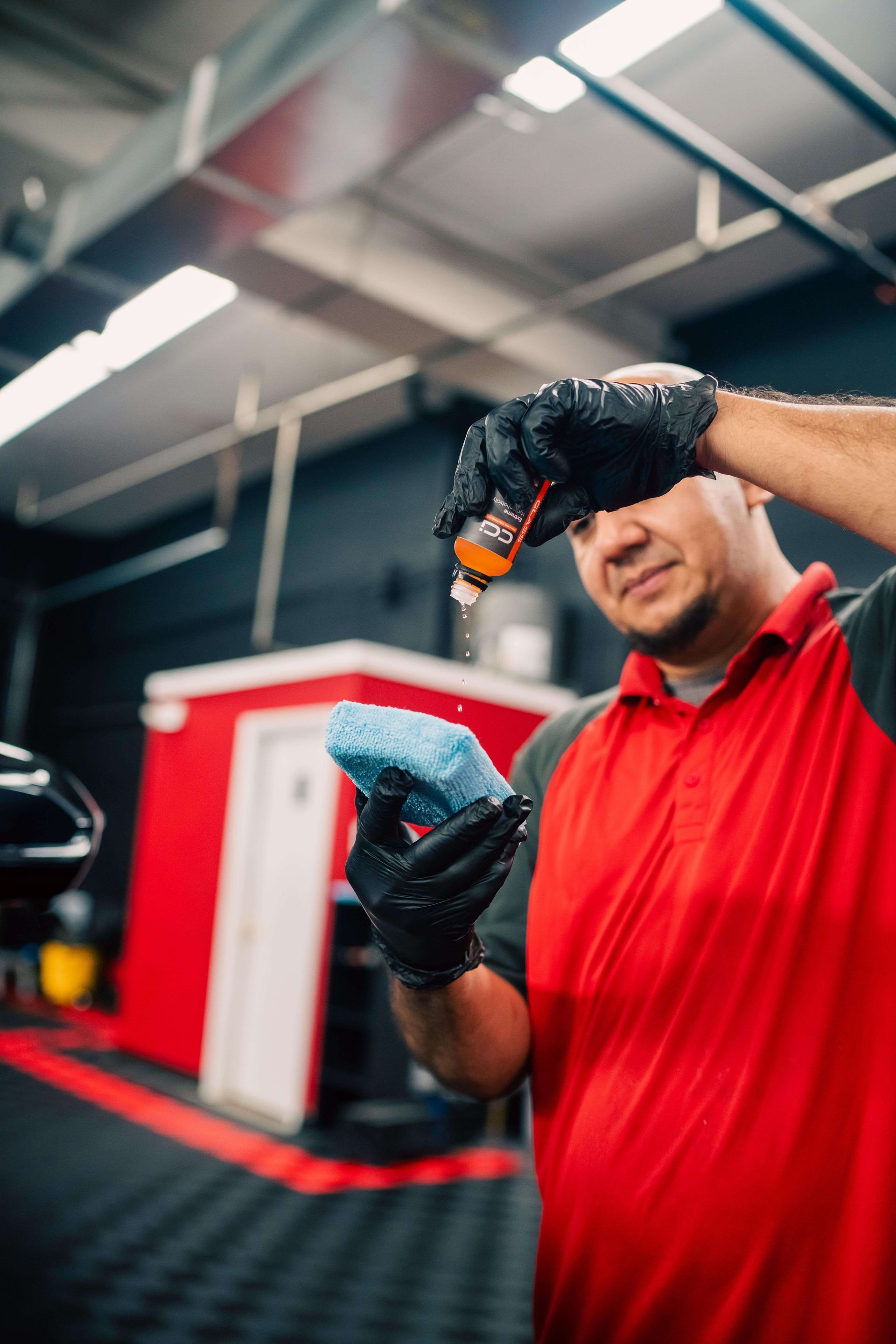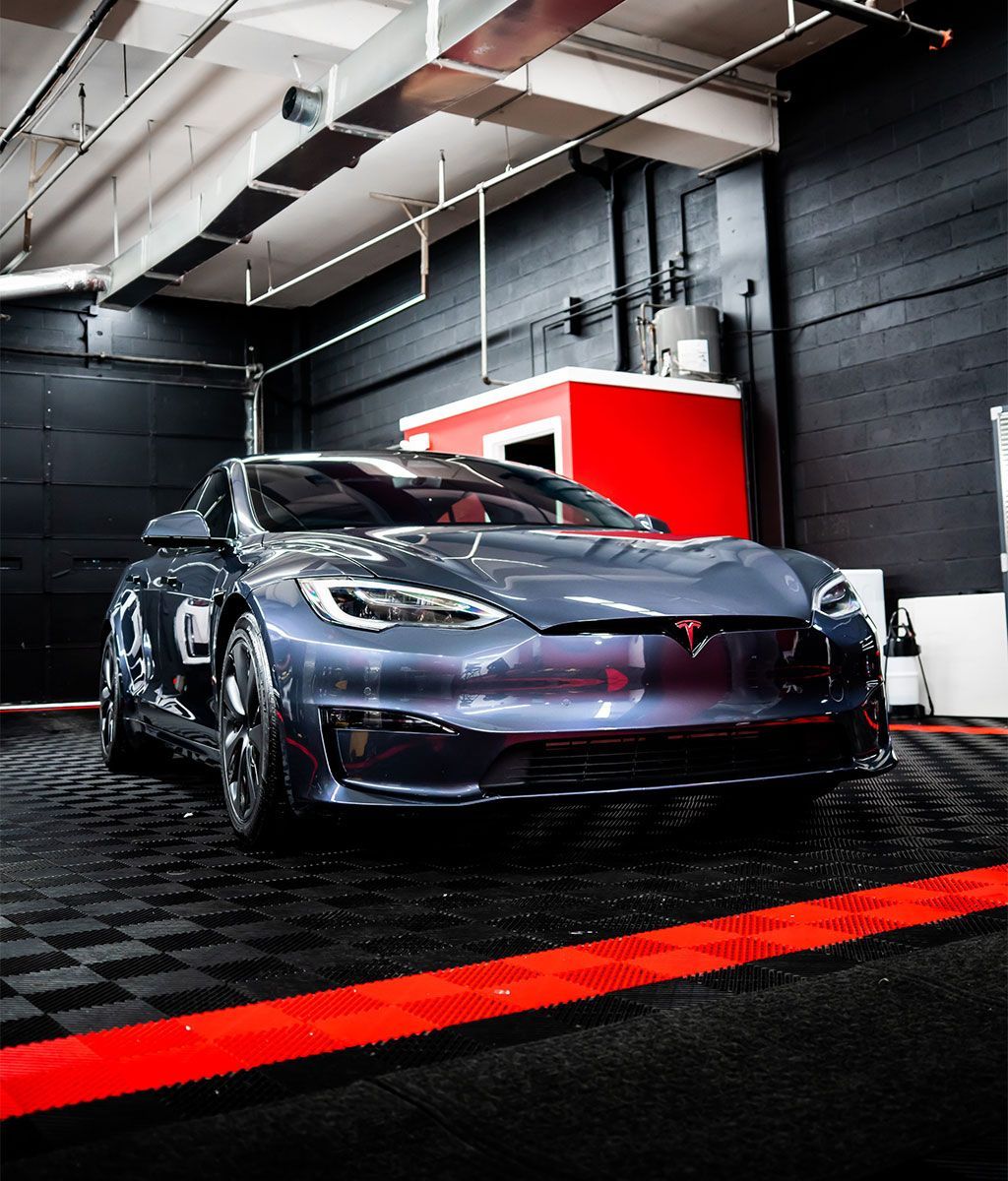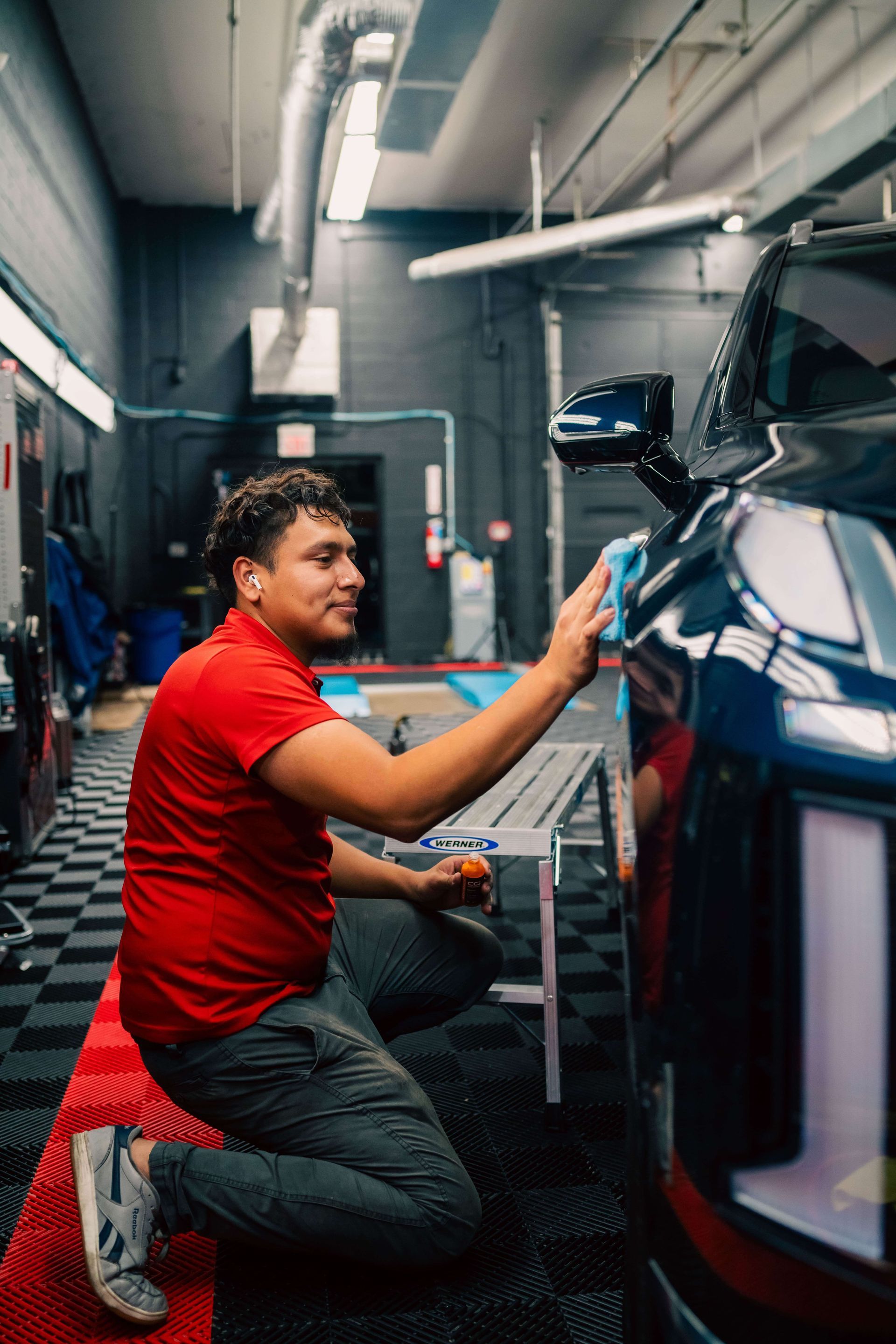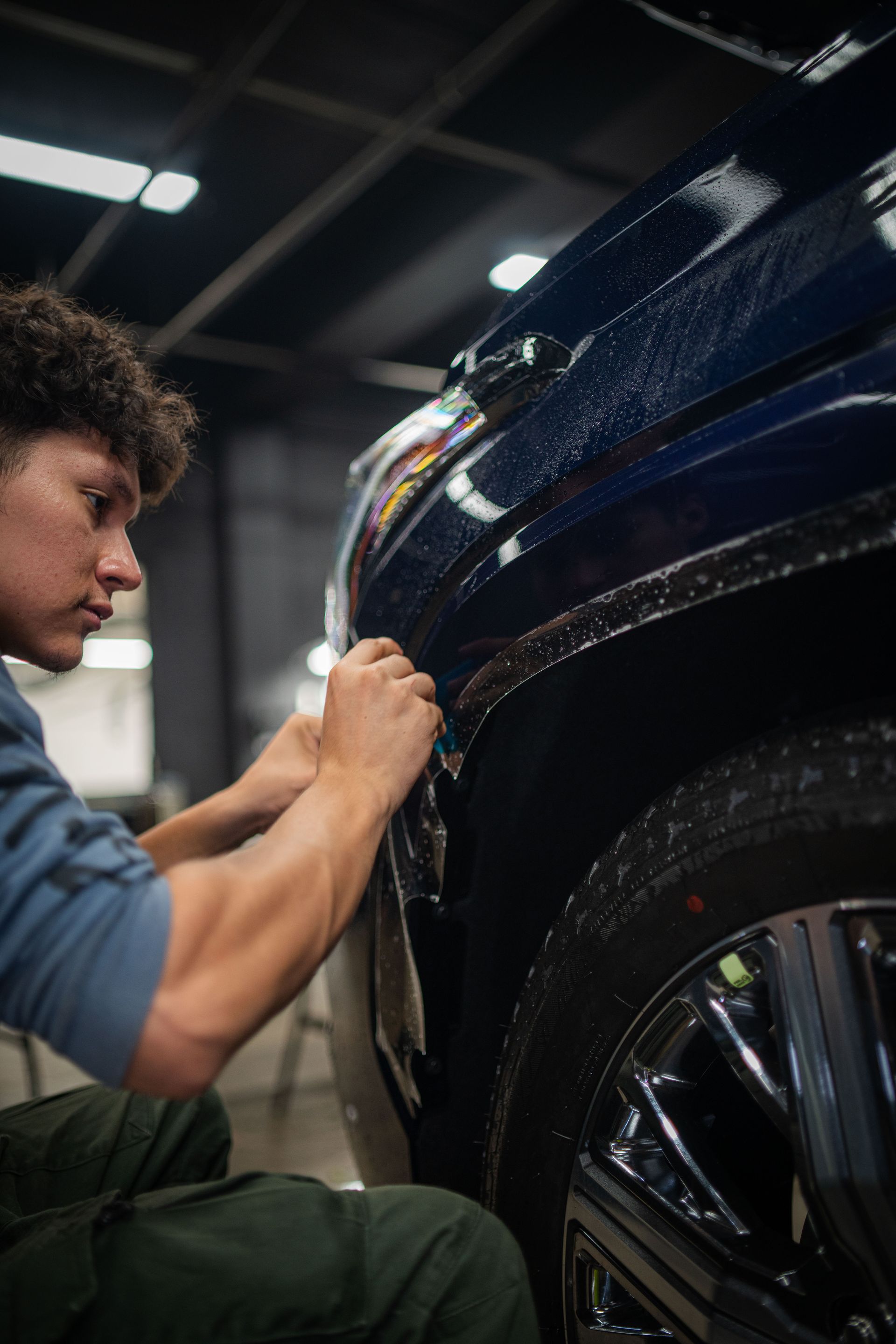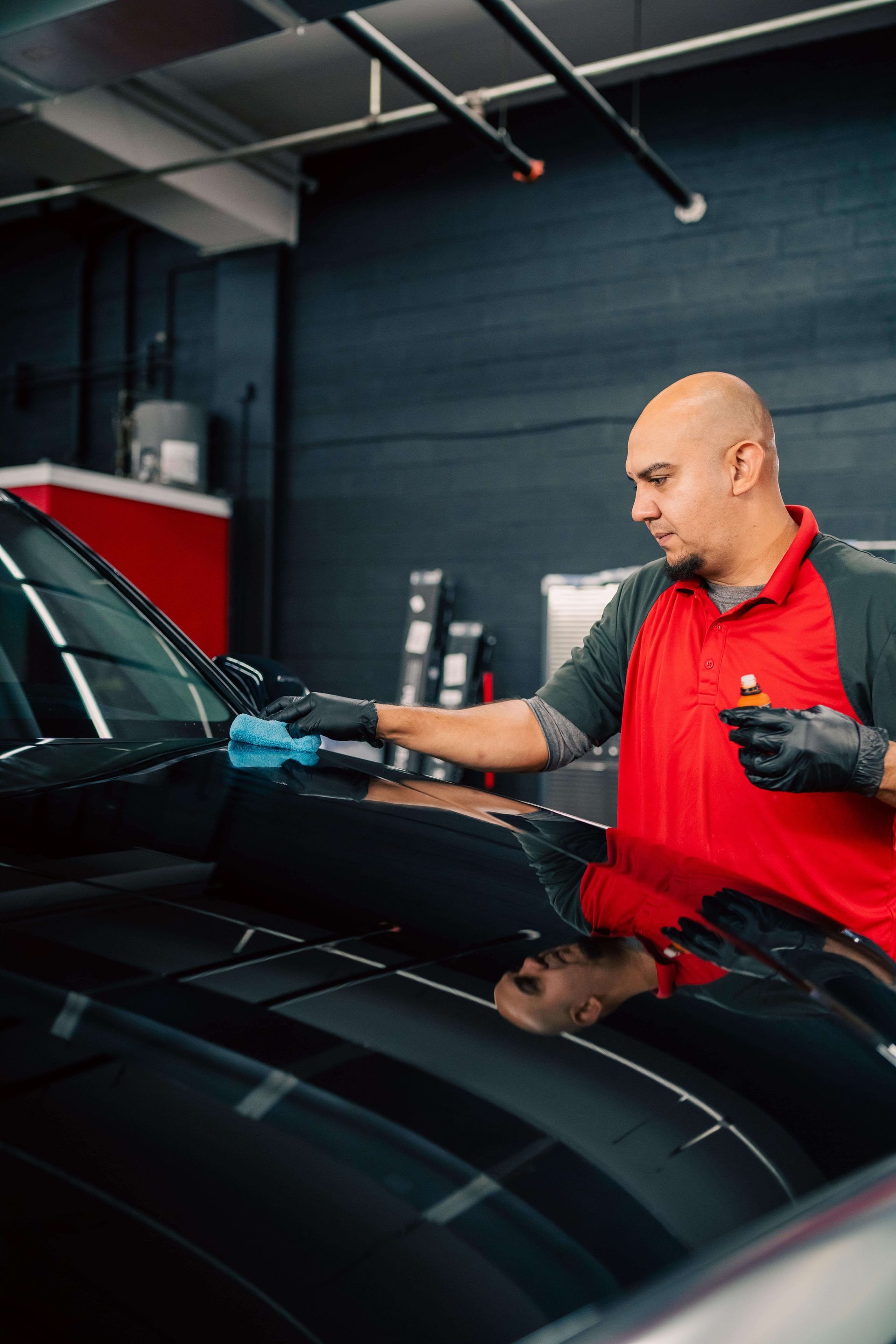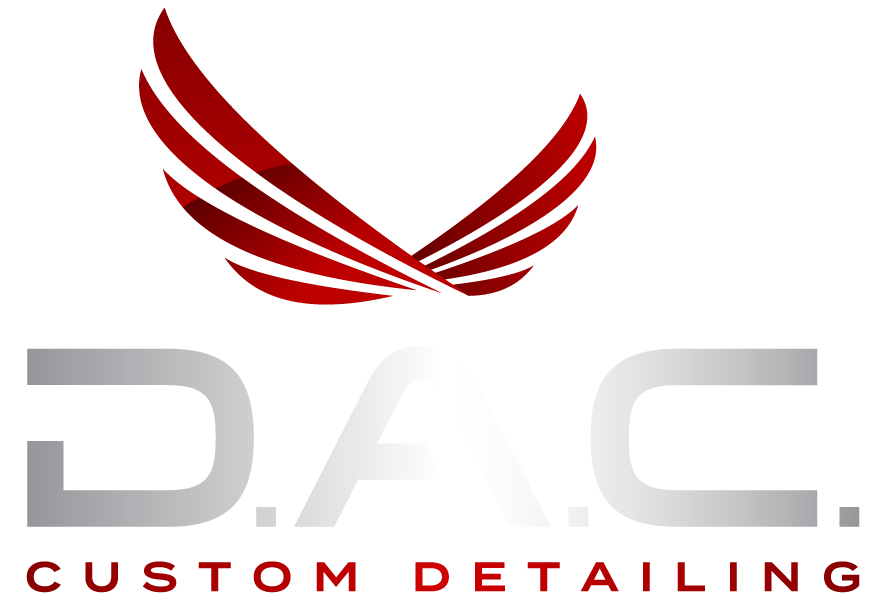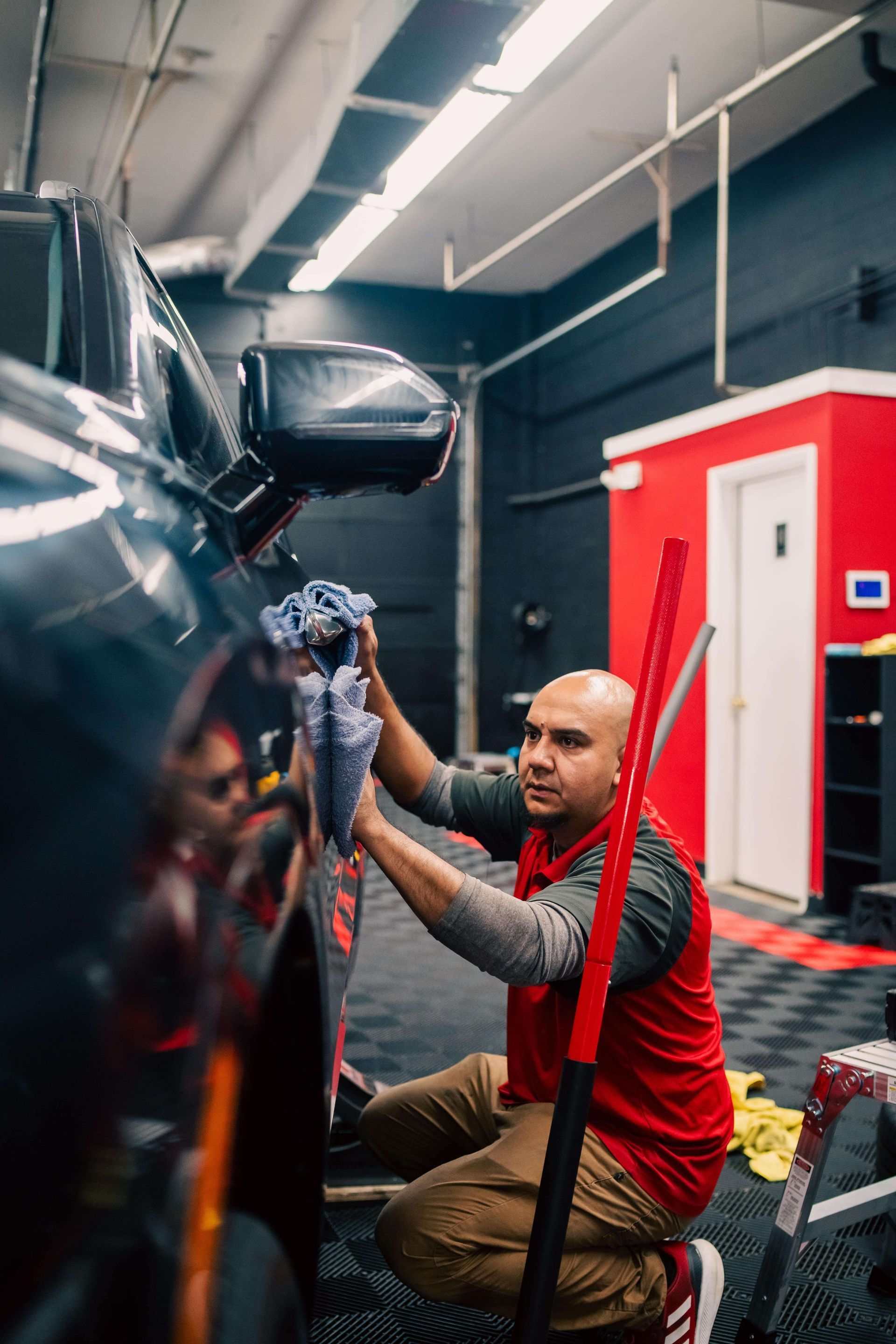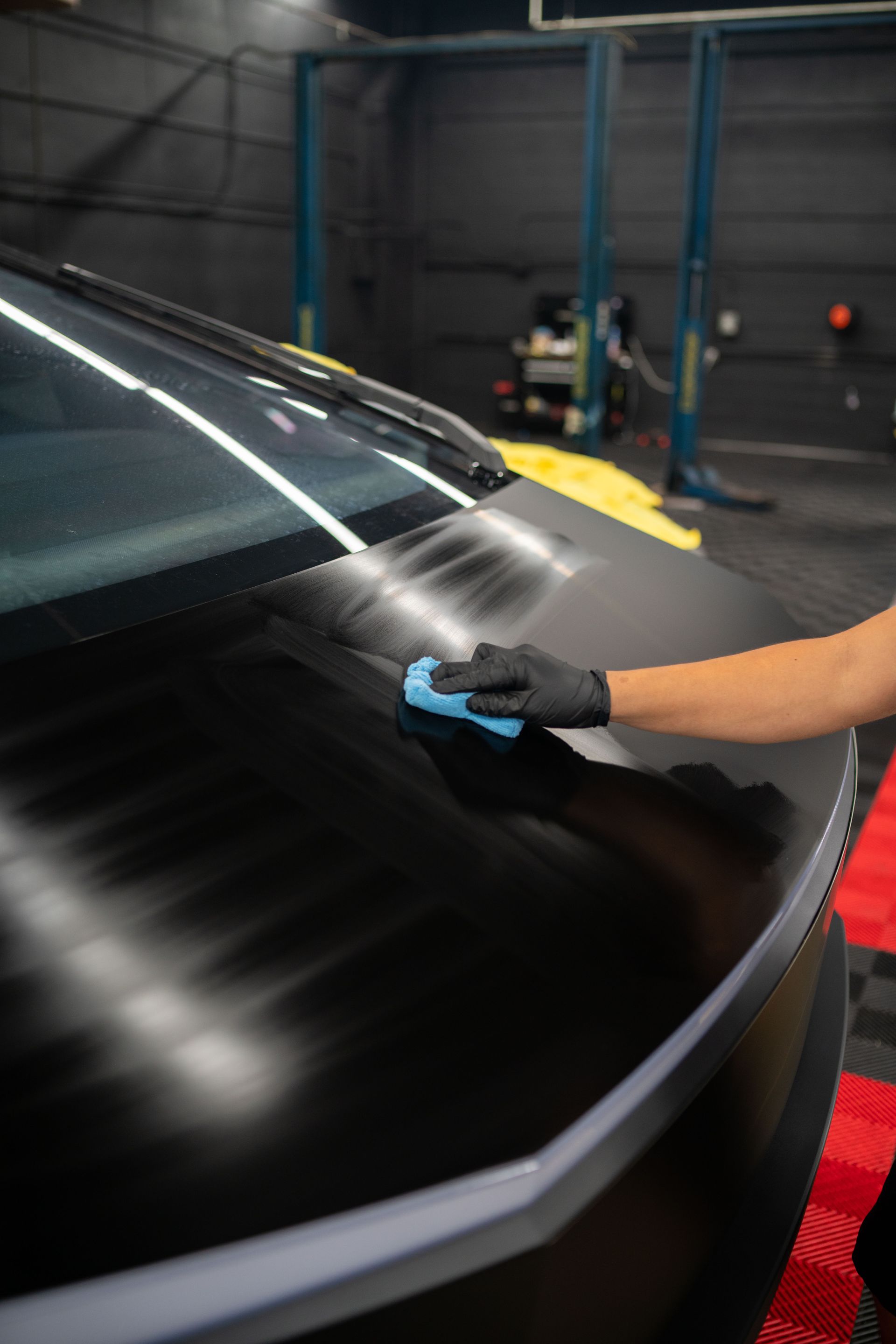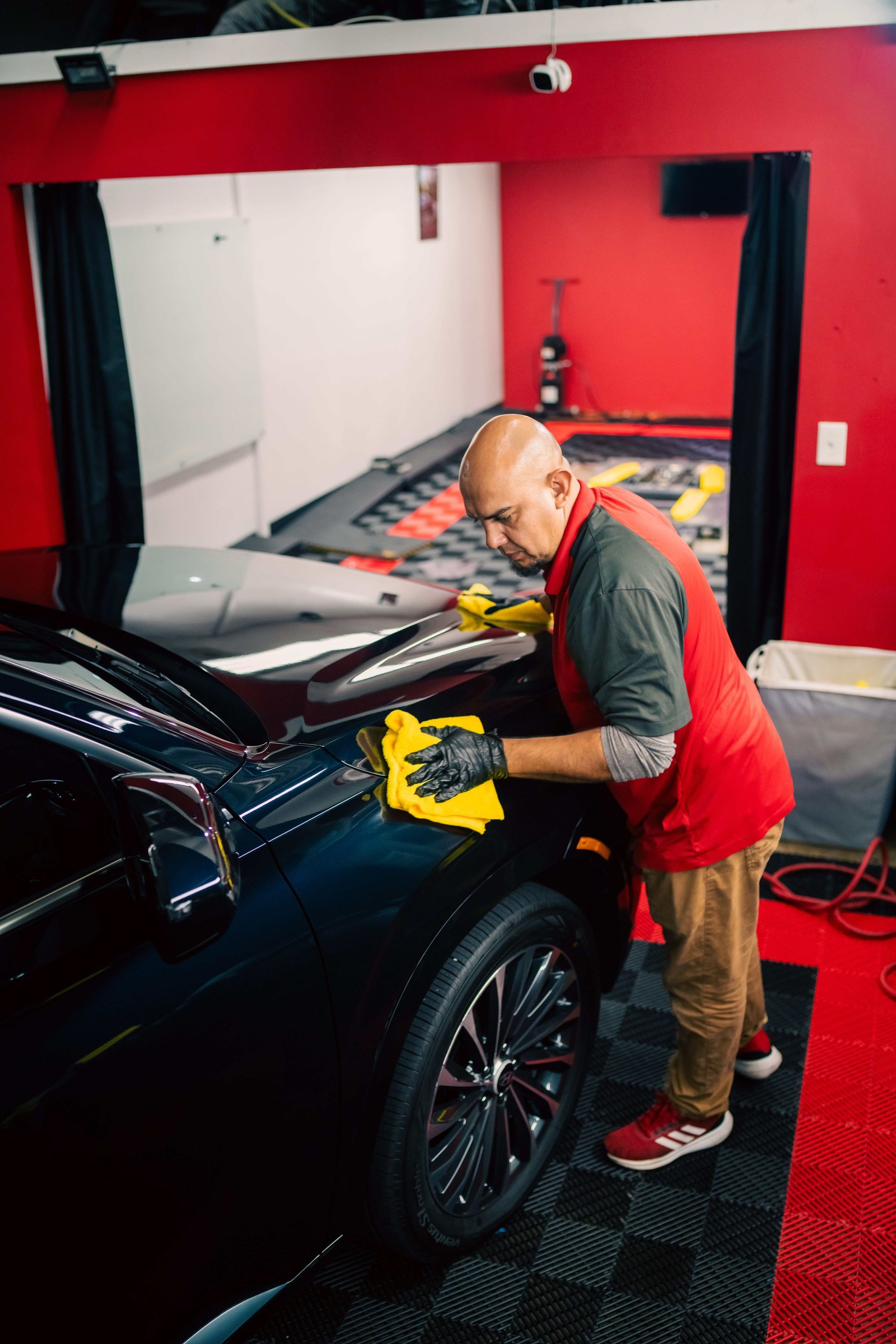REVIVE, PROTECT, MAINTAIN
When it comes to keeping your vehicle looking sharp and protected, ceramic coatings can be a game-changer. But with so many options out there, figuring out which one is right for your car can feel a bit overwhelming. You might wonder if you really need a high-end product or if something more budget-friendly will do the trick. In this guide, we’ll break down how to choose the best ceramic coating by diving into important factors like durability, environmental resistance, and the needs specific to your situation. If you've ever felt lost in a sea of choices while trying to protect your prized ride, you’re not alone—and we're here to help clear things up.
When choosing the best ceramic coating for your vehicle, consider factors such as the reputation and experience of service providers, the product's durability and resistance to environmental elements, and customer reviews that reflect real-world performance. Additionally, look for certifications of installers, warranty options offered by products for peace of mind, and features like hydrophobic properties that enhance cleaning efficiency while maintaining aesthetic appeal.
Evaluating Your Vehicle's Needs
Every vehicle is unique, and understanding how it interacts with its environment is a significant step in choosing the best ceramic coating. Think about it: if you live in a bustling city with high pollution levels and acid rain, your car’s paint is constantly under attack from harsh elements. In contrast, if you're nestled in a quiet rural area, dust and mud may be more of a concern for your vehicle. Therefore, start by closely assessing your surroundings.
Evaluate Your Environment
For example, urban environments can introduce challenges such as acid rain and soot accumulation, damaging your car’s exterior faster than you might expect. On the other hand, rural locations might expose vehicles to regular dirt, pollen, or even farm chemicals, which require different protective measures. The Environmental Protection Agency (EPA) has confirmed that cars parked outdoors without cover can experience paint degradation at rates up to 25% faster than those sheltered in garages. It's essential to weigh these factors when selecting the right ceramic coating.
Furthermore, parking habits significantly influence the longevity of your car’s finish. If your vehicle usually spends nights parked outside or is often exposed to tree sap from nearby foliage, it becomes critical to opt for a coating that boasts excellent environmental resistance. These coatings effectively repel UV rays while standing firm against bird droppings and other contaminants.
Location and usage patterns play vital roles in determining what kind of ceramic coating is appropriate for your vehicle. Understanding these aspects will enhance your decision-making when looking for the best protective solution. Having this knowledge allows us to move forward and explore how different types of coatings cater to various needs and environments.
Comparing Types of Ceramic Coatings
Not all ceramic coatings offer the same level of protection or ease of application. They generally fall into three distinct categories: hybrid ceramic waxes, spray coatings, and professional-grade coatings. Each serves its purpose based on your specific requirements, preferences, and how much you’re willing to invest in protecting your vehicle.
- Hybrid Ceramic Waxes: Hybrid ceramic waxes blend traditional car wax with new-age ceramic technology. These products are perfect for car owners who prioritize simplicity and ease of use. You can apply them just like regular wax, and they provide a glossy finish that enhances the overall appearance of your vehicle. However, it’s important to note that while they make for an excellent user-friendly option, their durability is typically limited. Many users find that they need to reapply these coatings more frequently than others—often every month or two—to maintain that protective shine. By combining the best of both worlds, hybrid waxes deliver decent protection and a beautiful finish but don’t expect a long-lasting barrier against harsh conditions.
- Spray Coatings: If you're looking for something that balances ease of use with impressive durability, spray coatings might catch your eye. These coatings are straightforward to apply; simply spray on and wipe off—there’s not much fuss involved. Unlike hybrid waxes, spray coatings offer noticeably stronger protection than standard wax alone. However, their longevity typically ranges from six months to a year, depending on usage and environmental factors. Customers often rave about how well these sprays resist water spotting and road grime while facilitating easier cleaning on a day-to-day basis. In bustling metropolitan cities or regions with unpredictable weather patterns, opting for a spray coating can save you time and headaches while ensuring that your car remains slick and protected against dirt.
- Professional-Grade Coatings: For those seeking a long-term investment in their vehicle’s aesthetics and protection, professional-grade coatings stand out as the premium option. Leading brands offer solutions that can be seen as semi-permanent, boasting lifespans between two to five years when applied appropriately by professionals. These coatings require an upfront financial investment but promise unparalleled protection against environmental insults such as UV rays, acidic contaminants, and chemical fallout. The application process itself is meticulous and should only be handled by trained experts to maximize effectiveness. Once set, these coatings create a robust barrier that repels water and debris while preserving the integrity of your vehicle’s paintwork.
It's crucial to weigh the pros and cons of this type of coating given the initial costs—though many users report feeling satisfied knowing their vehicle has top-tier protection against potential damage. Choosing the right ceramic coating involves considering immediate benefits alongside long-term value relative to your unique situation—whether that's frequent driving in variable climates or simply wanting to keep your car looking pristine longer. Now that we have examined the various types available, it is essential to explore what indicators signify quality within this category.
Recognizing Quality Indicators
The best ceramic coatings aren't simply determined by brand names or flashy marketing; rather, it's the specific characteristics of these products that truly represent their quality. One key aspect to look out for is the ingredient composition. High-quality coatings typically contain a significant amount of SiO₂ (Silicon Dioxide). When you see a product boasting SiO₂ content above 80%, you're likely looking at a reliable, durable option. This is crucial, as lower SiO₂ levels can lead to diminished performance and longevity over time.
In fact, according to a 2023 study, coatings with SiO₂ levels exceeding 80% demonstrated an impressive 30% increase in durability compared to those with lesser percentages. This statistic emphasizes just how important it is to scrutinize the ingredient list before purchasing a ceramic coating. Speaking of making informed decisions, customer reviews can be your best friend in this process.
Customer Reviews
Online platforms such as Amazon and specialty auto detailing forums provide valuable insights into how well a product performs in real-world conditions. Always take the time to read through testimonials and ratings to understand user experiences genuinely. Are customers consistently praising the product's ease of application? Do they mention enhanced durability and effectiveness?
Remember, anecdotal evidence from fellow car enthusiasts can often reveal details that manufacturers might overlook. Look for patterns in feedback: if multiple users highlight issues with streaking or difficulty during application, it may be worth reconsidering that particular product. Positive reviews can serve as reassurance, while negative ones may save you from a potential headache down the line.
Taking notes on both ingredient quality and user feedback will guide you toward selecting the perfect ceramic coating for your vehicle. The next step involves understanding how to achieve a successful application for optimal results.
Steps for Proper Application
When it comes to applying ceramic coatings, the process is essential for achieving the desired outcome. Begin by ensuring that your vehicle is prepared not just visually but physically for this transformative process. It’s crucial to remember that any oversight can lead to unsatisfactory results like streaks or reduced protection. That’s why following a meticulous step-by-step guide is so important.
Step-by-Step Guide
- Thorough Cleaning: Start with a thorough wash of your vehicle using a pH-neutral soap specifically made for car care. This type of soap effectively removes dirt and grime while being gentle on your car's surface, preventing any harm to existing coatings or wax. Avoid dish soap, as it can strip existing wax and leave the surface vulnerable. If your car is fresh, however, then using dish soap initially to completely cleanse the surface is fine. Ensuring that there’s no residue from previous treatments greatly improves the bond of the ceramic coating. After cleaning, we need to take additional measures to prepare the surface further.
- Clay Bar Treatment: The next step involves using a clay bar—a magical little tool in the world of auto detailing. By gliding the clay bar across the vehicle's surface, you'll effectively remove embedded contaminants that weren’t eliminated during washing, such as tree sap and industrial fallout. This step is crucial because it guarantees a smooth finish that allows for optimal adhesion of the ceramic coating. Just remember to use plenty of lubricant; none of us wants a scratchy affair! Now that we've prepared the surface well, let’s ensure it’s completely clean and ready for application.
- Panel Prep: Once you've finished with the clay bar treatment, it's time for some panel prep work. Wipe down every area where you plan to apply the ceramic coating using isopropyl alcohol diluted in water—this clears away any leftover residues from washing or claying that could hinder bonding. Although it seems trivial, this step lays the foundation for success by ensuring maximum chemical adhesion between the coating and your car’s paintwork. With everything ready, we can now move on to applying the ceramic coating itself.
- Application: For application, it’s wise to proceed in small sections to avoid rush-induced errors. Following your manufacturer’s specific instructions here will yield the best outcome; they know their product better than anyone! As you apply the coating with a clean microfiber cloth, make sure to buff each section immediately after applying—it helps eliminate streaks or high spots effectively. Remember: Patience is key; taking your time here pays off in an extraordinary shine and protection.
Following these steps diligently can greatly influence both visual appeal and longevity of your ceramic coating; protecting your vehicle from environmental hazards is paramount in getting the benefits you've invested in.
Effective Maintenance Tips
Properly maintaining a ceramic coating is crucial for prolonging its life and effectiveness. You can think of it like a health routine for your car's exterior, where consistency is key. Regular upkeep not only enhances appearance but also guards against environmental contaminants that can lead to premature wear and tear. To kick things off, regular washing is fundamental—just like how you wouldn’t skip brushing your teeth!
- Regular Washing: It’s vital to wash your vehicle regularly using pH-neutral soaps. This helps avoid degrading the coating while ensuring that dirt or grime doesn’t set in. Ideally, aim to wash your car every two weeks. During this time, you will notice that a clean vehicle not only looks great but also plays a significant role in keeping your ceramic coating intact. Now, while washing is important, the choice of products used during the process carries equal weight.
- Avoid Harsh Chemicals: As tempting as it might be to grab that bottle of multi-purpose cleaner you have hanging around, resist that urge! Harsh chemicals and abrasive cleaners can scratch or corrode your ceramic coating over time. Instead, invest in gentle cleaning solutions specifically designed for automotive surfaces. Beyond just avoiding strong chemicals, the tools you use matter too. Opt for soft microfiber towels for drying and cleaning—these won't leave micro-scratches like rough materials might. In addition to using the right products, incorporating maintenance sprays made for ceramic coatings can be a game changer. These boosters help in refreshing hydrophobic properties and keeping dirt at bay, making future washes even easier. However, maintenance doesn't stop with washing; regular inspections play an equally important role in preservation.
- Regular Inspections: It’s wise to inspect your ceramic coating at least twice a year for signs of wear or damage. Check for water beading patterns; if water no longer beads up and rolls off but rather sits flat on the surface, it may indicate wear and could require reapplication or treatment. Staying proactive will save you from unexpected costs down the road by addressing issues before they escalate into larger problems. Everything good requires a bit of diligence and care—from personal health routines to maintaining our beloved vehicles.
With these maintenance strategies in mind, we can now explore the best options to ensure every aspect of your car remains spectacular.
Making the Right Choice for Your Vehicle
When it comes to selecting ceramic coatings, it’s crucial to consider not just the product features but also how they fit into your lifestyle and vehicle needs. The first step is to assess your vehicle's typical exposure to harsh conditions. If you often face extreme weather, such as intense sun or acidic rain, investing in a higher-grade coating will provide better protection and durability over time. For those with garage-kept vehicles that face milder conditions, a mid-tier option may suffice.
As you navigate through this selection process, it's essential to weigh how much ongoing effort you are willing to commit to maintaining the coating once applied.
Evaluate Cost vs. Benefit
A 2024 consumer report highlighted that individuals who aligned their coating choices with their vehicles' specific needs reported a staggering 40% higher satisfaction rate compared to others. This statistic underscores how critical it is to not just choose any product but the right product tailored to what your car truly needs.
As you reflect on your unique circumstances and preferences, remember that each decision you make should bring your vehicle closer to being well-protected and looking its absolute best. In conclusion, by carefully evaluating your vehicle’s needs and weighing costs against benefits, you can confidently select a ceramic coating that enhances its protection and appearance. Making an informed choice leads to greater satisfaction in the long run.
Premium Ceramic Coating in Alexandria, VA
Give your vehicle the ultimate defense against the elements with professional ceramic coating from D.A.C. Custom Detailing! Serving Alexandria, VA, we apply high-quality ceramic coatings that enhance gloss, repel dirt, and provide long-term protection against UV rays, water spots, and contaminants. Enjoy a showroom finish with minimal maintenance—contact us today to schedule your ceramic coating service!
Share with friends
